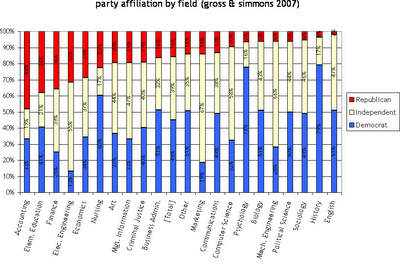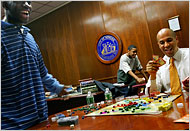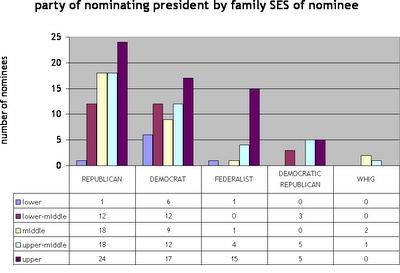 inside higher ed summarizes a careful new study by neil gross and solon simmons on the political views of american professors. i created the figure above from their table 8, which examines party affiliation in the top twenty degree-granting fields. i’ve only perused the paper, but i’m impressed by the response rate, sample size and survey items (e.g., adapting wording from questions on the american national election study).
inside higher ed summarizes a careful new study by neil gross and solon simmons on the political views of american professors. i created the figure above from their table 8, which examines party affiliation in the top twenty degree-granting fields. i’ve only perused the paper, but i’m impressed by the response rate, sample size and survey items (e.g., adapting wording from questions on the american national election study).
i’ve organized the figure by percent republican, but there’s likely an interesting story in the heterogeneous “independent” category as well. about 49 percent of sociologists self-identify as democrats, 46 percent as independents, and 6 percent as republicans — a distribution strikingly similar to that of political science. criminal Justice professors seem a bit more conservative, at 40 percent democrat, 40 percent independent, and 19 percent republican. overall, republicans are rare in the social sciences (excepting economics) and humanities, but somewhat more prevalent in business and engineering.
in earlier posts, i’d cited data suggesting an even more lopsided distribution in the social sciences. this made me “worry in a what’s the matter with kansas way about sociologists losing the hearts and minds of america. aside from real or perceived biases in instruction, would sociological knowledge flourish or founder if sociology faculty looked a little more like the rest of the citizenry on this dimension?”
the new study partially allays my fears, though i’m still convinced that greater ideological diversity would improve the state of knowledge in my home disciplines. that said, i’ll leave it to others to launch the affirmative action initiative for underrepresented conservatives in social science.






